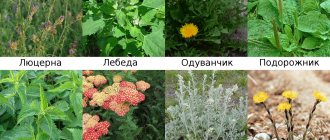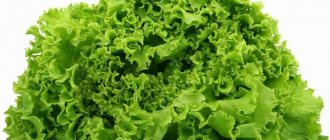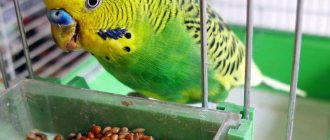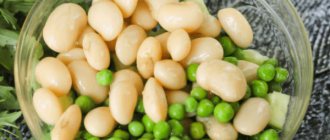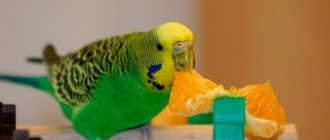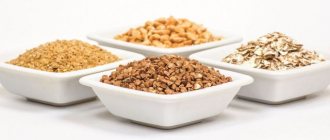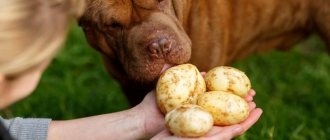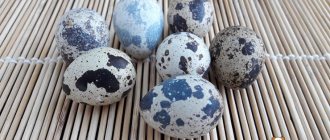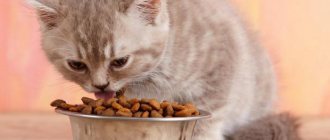Rabbits are herbivores and need not only green, succulent food, but also grains. Cereals contain many useful substances, and this method of feeding is considered economical and simple. In order for the food of decorative rabbits to be balanced and nutritious, it is necessary to know which types of cereals are most useful for these animals, and also to study ways of using them as feed.
Cereals for rabbits
It is impossible to imagine the daily diet of rabbits without the addition of grains. An animal cannot fully grow and gain weight by eating exclusively grass, hay and vegetables. Thanks to the unique composition of grain crops, the animal receives the necessary amino acids and vitamins.
A mixture consisting of oats, wheat, barley or corn strengthens the immune system and promotes the proper development of pets.
Wheat
Wheat grains are an indispensable component of the grain mixture for rabbits. They contain almost all B vitamins, as well as valuable vitamin E. Wheat is a record holder for the content of nutritious fats, carbohydrates and proteins, which means it promotes rapid weight gain in meat breeds of rabbits.
Experts recommend feeding animals with feed grain, but you should not get too carried away with wheat, otherwise intestinal bloating in rabbits will not be avoided.
It is better to feed animals crushed or sprouted grains. The amount of wheat grains should not exceed a third of the total weight of the feed mixture. During the winter months, the supplement is necessary to replenish the supply of vitamins in pets. The hard shell of the grains acts as an abrasive, so animals that regularly chew food easily wear down their teeth. Purchase wheat for feed in dry and pure form.
Oats
No grain mixture is complete without the addition of oats. This healthy cereal enriches the rabbits’ body with copper, silicon, cobalt, manganese, zinc and valuable B vitamins.
The nutritional value of the crop is great, because oats contain 10 g of protein, 8 g of fat and 55 g of carbohydrates per 100 g of product. At the same time, unlike wheat, cereal prevents rapid weight gain in animals, so oats are actively used in the fight against obesity in rabbits.
Cereal has a beneficial effect on the health of pets. Oats contain valuable pantothenic acid, which regulates intestinal function and helps the animal’s body get rid of harmful substances. A useful, nutritious element is added to the diet of rabbits.
Corn
The crop is a record holder for carbohydrate content, so corn is used to quickly gain weight in rabbits. The grains are well digestible in combination with amino acids and protein. In addition to vitamin E, corn contains useful substances such as iron, phosphorus, magnesium and potassium.
See also
Is it possible to give bananas to rabbits and how to do it correctly, the benefits and harms of the fruitRead
Despite the obvious advantages of the crop, it is given only as a component for the feed mixture. Excessive use of nutritional supplements will inevitably lead your pet to obesity.
Barley
An invariable component of the daily diet of nursing rabbits and small rabbits. The nutritious cereal contains active substances – choline and lysine. They accelerate the development and growth of pets. Barley supplies animals with potassium, calcium and B vitamins.
Before feeding, barley is crushed, otherwise the shell covering the grains may interfere with the digestion of food.
Rye
Occasionally, rye can be included in the grain mixture. The culture is rich in amino acids and promotes the development of immunity. Not only grains, but also plant stems are used for feed. Rye often causes bloating and intestinal upset in animals, so most farmers do not like to use the crop to feed their pets.
How to germinate wheat for rabbits?
There are 2 ways to germinate wheat. The first is suitable for a small number of pets, the second - for a large household.
1st method
To obtain shoots, wheat is soaked in water and left for a day in a warm room. When the grain swells, it should be spread in a thin layer into a container (baking tray, tray), covered with a wet cloth, and left warm until germination.
2nd method
A significant volume of grain is filled with water. The container is left in a cool place for 12 hours. The swollen wheat is transferred to plastic bags with holes to remove excess moisture. For sprouts to germinate, the bags must be kept in a warm room.
Rabbits must be fed sprouted wheat, the sprouts of which do not exceed 1.5 mm.
Rabbit breeders should carefully monitor the germination process. Sprouts that reach 2 mm in length do not carry much nutritional value, and toxic substances are formed in large sprouts.
Cleanliness is the key to a healthy pet. The cage and food must be kept clean at all times.
In what form to give
Each owner decides for himself in what form to give grain to his pets. In any case, the ingredients must be carefully inspected and all spoiled grains must be removed. The feed may be unusable due to fungal or insect damage. Rabbits should not be given unripe, raw or overdried grains. High-quality raw materials for feed mixtures are processed in different ways.
Yeasting
The feed preparation method is often used for fattening meat breeds of rabbits. This kind of “doping” whets the pet’s appetite and helps the animal gain weight. Feed preparation consists of several stages:
- The raw materials are crushed and filled with clean water. The optimal proportions are 1:2.
- 35 g of yeast are diluted in 2 liters of warm water.
- The prepared ingredients are mixed and left to ferment overnight.
- After 8-9 hours the nutrient mixture will be ready. During infusion, the mass is stirred periodically.
3 tablespoons of the resulting yeast mixture are added to the feeder, diluting the dry grain mass intended for feeding.
Steaming cereals
A favorite, simple method of preparing nutritious food for long-eared pets. Selected grains are placed in a bucket. You should not fill the container completely, the steamed raw materials will increase in size and the mass will “overflow its banks.” The grain is poured with boiling water, 1 tbsp is added to the mixture. l. salt and leave for 5-6 hours. The swollen mass of sweet grains is fed to animals.
See also
How does a hare differ from a rabbit, comparison of species and is crossbreeding possible? Read
Germination
Sprouted grain helps cleanse the intestines and improves the immunity of pets. Unlike dry raw materials, sprouted cereals and grains are completely digestible by animals.
The feed mixture is prepared as follows: dry grains are poured with warm water and left to swell for 24 hours. After soaking, the raw materials are laid out in baking trays. Then the grains are covered with a piece of damp gauze and left until germination. When the first green beaks of the sprouts appear, the food is ready to eat.
Crushed grain
Oats, wheat, corn or barley are crushed and given to animals in this form. This mixture is easy to find on sale or make yourself.
» width=”600″ height=”291″ data-srcset=”https://dachamechty.ru/wp-content/uploads/2020/04/krolik-zerno-trava_02.jpg 600w, https://dachamechty.ru /wp-content/uploads/2020/04/krolik-zerno-trava_02-300×146.jpg 300w" data-sizes="(max-width: 600px) 100vw, 600px">
How to choose grain for germination and prepare food
Ripe, high-quality grain without mold is suitable for germination.
Sprouted grains, especially wheat and oats, are considered an excellent addition to a rabbit's diet, containing large amounts of vitamins and beneficial enzymes. When choosing a culture, you need to pay attention to the following criteria:
- Quality of the composition. If there are weed seeds or pebbles among the grains of wheat or oats, it is better not to purchase it.
- Ripeness of culture. When there are a lot of green, unripe grains in the mass, such food will not be beneficial to rabbits.
- No mold or pests. The grain needs to be carefully reviewed; if there are particles with black spots, you should refuse such a purchase.
- Cereal quality. The grain must be in good condition; feed cannot be prepared from raw or overdried grain.
- Shelf life. If the grain has been stored for more than 1 year, the grains will not be able to germinate well.
For germination, the grain is spread in a thin layer and moistened.
To germinate grains and prepare high-quality food, you need to do the following:
- Rinse the grain thoroughly in plenty of running water.
- Soak wheat or oats in water and place in a warm room for a day.
- Remove grains that have floated to the surface from the total mass.
- Spread the mixture in an even layer on a wide, flat dish, such as a baking sheet or tray.
- Cover the grains with moistened gauze and place in a warm place for germination. In a few days the food will be ready to eat.
Important! You should not prepare a lot of sprouted grain at once, since as the stalks grow, the usefulness of such complementary food decreases.
Rules for feeding rabbits
The daily norm of grain feed for a medium-sized rabbit (up to 5.5 kg) is 60 g. During pregnancy and lactation, the norm for female rabbits is increased to 100 g. Rabbits are given a mixture consisting of 25% barley, 50% wheat and 25% corn .
Feeders are installed simple, in the form of a trench. It is convenient to pour grains and feed into them. To prevent pets from turning over the feeder, the device must be carefully secured.
Zolotukhin method
The technique consists in selecting the composition of the feed mixture, depending on the gender, age and period of life of the rabbit. For example, males are fed a mixture of barley, oats and a small amount of corn. At the same time, pregnant females eat crushed barley.
This is important to know
If you follow the required dosages and recommendations of specialists, you don’t have to worry about the result. But there are contraindications that are worth considering:
- Green cereals cut immediately after flowering should not be included in the diet of rabbits. This can cause flatulence and problems in the gastrointestinal tract.
- Adults, during the productive period, should reduce the amount of such food so as not to provoke obesity and further liver problems.
- The types of cereals should be changed to ensure a balanced and complete diet.
- If, after introducing this cereal into the diet, the animal’s general condition worsens, it is worth eliminating oat crops from the diet and calling a doctor.
How to germinate wheat for rabbits
There are several technologies for germinating grain, which boil down to the fact that the wheat needs to be soaked so that it swells and placed in a dark, warm place with a temperature of about 25°C. The main thing is not to overdo it and not allow the shoots to be larger than 1.5 cm. If their height reaches 2 cm, then they will practically lose their value for the body. When they become even larger, they may accumulate toxins that are very dangerous to the lives of animals.
It is a little more difficult to germinate wheat in large quantities, so you will have to master a new technology. To get several kilograms of grain, you need to adhere to the following recommendations:
- The grain is poured into a large saucepan and filled with water so that it is covered by 2 cm from above.
- Until the wheat swells, it should be kept in a room with a temperature of about 15°C.
- After 12 hours, the grain is poured into plastic bags with holes in a warm place. This is necessary to remove excess moisture.
- It is important to prevent the grain from overheating, so it is spread in a bag in a layer no thicker than 8 cm.
For your information! For sprouting, you should use only clean dishes and high-quality wheat. If the grain darkens and does not germinate for a long time, it means that it has been pickled and cannot be used as animal feed.
What is better to feed rabbits: mixed feed or grain?
Not only grain feed is useful for rabbits, but also mixed feed. In the winter, when it is not possible to feed the pet with fresh grass or greens, rabbit breeders use concentrated solid feed, as well as bran and legumes. The use of cereals requires compliance with feeding and storage rules.
If the components begin to deteriorate, forming moisture and mold, then the rabbit will have problems with the digestive system.
Concentrated feeds, which include grain crops, make up a quarter of the rabbit's diet. Rabbits happily eat wheat and oats. Such food saturates the body with vitamins and acts as a source of protein. Rodent owners who want to diversify the menu of their pets are interested in whether it is possible to give barley to rabbits. Let’s find out right now whether this cereal is good for eared animals.
Cereals for rabbits
Differences in feeding in winter
In winter, a rabbit's diet should contain many vitamins. Fish oil is used as a supplement.
One individual needs:
- 0.5 g – for rabbits;
- 1 g – adult pets;
- 2 g – to pregnant females;
- 3 g – lactating rabbits.
Rabbits are fed sprouted grain or wheat with baker's yeast. The yeast method should be alternated 5 through 3.
In summer, owners must stock up on hay; in winter, it makes up almost half of the animals’ diet. To feed juicy food, carrots, turnips, cabbage, and dry grass are fermented in barrels.
Your pet's winter diet should be varied and balanced, since at this time there is a shortage of additional proteins, fats, and carbohydrates.
There is no need to increase protein value. The animal body is able to receive and digest the required amount of the substance at any time.
On a note! Feeding should always be done at the same hours 2-3 times a day. If the food is warm, your pet's digestion and appetite will improve.
How to feed it to animals correctly
Feeding your pets only regular whole grains is not a good idea; although it helps to wear down teeth, it is still quite difficult to digest and can lead to serious health problems.
So what grain should you feed your rabbits? Before purchasing wheat, you should inquire about its origin. You cannot buy cereals for feeding without checking the documents for them. You should be sure that they are not treated with harmful chemicals that can harm the health of the animal. Also, the grain for rabbits needs to be carefully inspected so that it is not dirty or covered with an oil crust.
Important! No matter how clean the wheat may seem, it is still better to wash and dry it before giving it to your pets. You should also pay attention to the conditions in which the grain is stored. Under no circumstances should it be left outdoors where it rains. It will definitely deteriorate and become unsuitable for feeding.
Also, beginning rabbit breeders often ask themselves: what is the best grain for rabbits? Today there are many species that would be acceptable to feed eared pets. Just don’t overuse rye bran; it’s better to replace it with wheat varieties.
And, having decided on what grain can be given to rabbits, this does not mean solving the problem. The health of animals also depends on the form in which the wheat was given. And the methods of preparing grain crops should be different. It should be given to pets raw, sprouted and steamed. By alternating food in this way, you can improve the animal’s digestion processes and provide the body with the necessary vitamins.
The health of animals also depends on the form in which the wheat was given.
